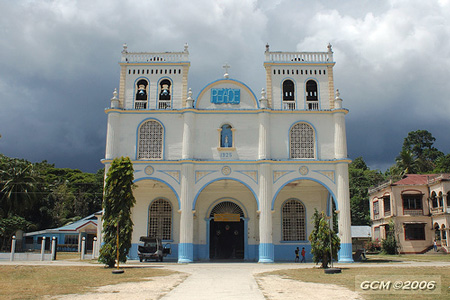⭐ BEST FERRY via CEBU & Countryside Tour: Our pick for Ferry Tickets and Countryside Tours.

History of Lila
Check out Now the best Bohol deals
Ready to explore the beautiful islands of Cebu and Bohol? Secure your ferry tickets today through 12go and start your unforgettable journey!
Way back in 1869, during the Spanish Regime, a place called “Tinubdan” was discovered by the Spaniards. They were enthralled by the beauty of the place. Passing by a pool fed by a spring, their attention was caught by the flowering water lilies whose flowers where of lilac, a unique shade of the color violet. And thus the place was referred to as Lilac which later evolved into Lila.
The coastal town of Lila once belonged to the Municipality of Dimiao. It was composed of the barrios of the municipalities of Loay and Dimiao. In 1899, during the Spanish-American war, the municipal building, the church and neighboring houses were razed to the ground and burned. Thus, no records can be shown stating when Lila was annexed to the town of Dimiao. However, the Agustinian mission in Bohol has written that Lila was a separate municipality in 1879 and with a population of 4,023.
As early as in 1899, the faith and love for the Blessed Virgin Mary was firmly engraved in the hearts of the people of Lila. During the conflagration, the image of the Our Lady of the Holy Rosary was found intact among the ashes.
A chapel was constructed to provide shelter for the image, yet again; the chapel was burned down by the Americans. However, the image was found intact and without the slightest sign of damage after the 2nd conflagration. And so, when the time came for the parish church of Lila was to be established, the Blessed Virgin was lovingly enthroned as their Patroness.
Later, a town was founded and part of the municipality was annexed back to Loay and part to Dimiao. From that time up to 1914, the Municipal Government of Lila ceased to function.
However, in 1915 the Municipality of Lila was re-established. That part of Lila annexed to Dimiao and those annexed to Loay were returned and formed the new municipality of Lila.
For the church, it was initially administered alternately by a priest stationed in Loay and Dimiao due to the scarcity of priests. It was only in 1921 that the priest of Lila had a residential parish. The church and the convent built then were only made of light materials.
In 1915, during the administration of Rev. Fr. Narciso Magsalang with full cooperation of the parishioners, the present church was built. The convent was constructed under the able administration of Rev. Fr. Miguel Ortega sometime in the year 1941.
World War II came and, like all other coastal towns, the Japanese caused untold sufferings to the people of the town. Many civilians were tortured and the women raped. Atrocities were done usually by tying the natives to their houses then burning them. If not, they were killed with bayonets and shot. More or less, some thirty-one civilians were killed during the Japanese occupation.
After World War II, the town prospered. It is bounded in the east by the Municipality of Dimiao, in the west by the Municipality of Loay and in the north by the Municipality of Loboc and Bilar.
Check out for Bohol Hotel Deals
Back to Top: History of Lila Bohol Philippines
Back to Bohol
Ready to explore the beautiful islands of Cebu and Bohol? Secure your ferry tickets today through 12go and start your unforgettable journey!
recommended hotel booking
Book your stay in Bohol's breathtaking surroundings through Agoda and experience the ultimate relaxation
Top 25 Sights and Attractions in Bohol
- Chocolate Hills
- Tarsier Conservation Sanctuary
- Panglao Island
- Loboc River Cruise
- Hinagdanan Cave
- Balicasag Island
- Alona Beach
- Bilar Man-made Forest
- Blood Compact Shrine
- Baclayon Church
- Bohol Bee Farm
- Anda Beach
- Sipatan Twin Hanging Bridge Loboc
- Danao Adventure Park
- Sagbayan Peak
- Butterfly Conservation Center
- Clarin Ancestral House
- Dimiao Twin Falls
- Mag-Aso Falls
- Anda White Beach
- Lamanok Island
- Rajah Sikatuna Protected Landscape
- Dauis Church
- Can-umantad Falls
- Punta Cruz Watchtower
All Rights Reserved ©2024. Bohol Philippines Travel Guide
Address: Talibon, Bohol, Philippines